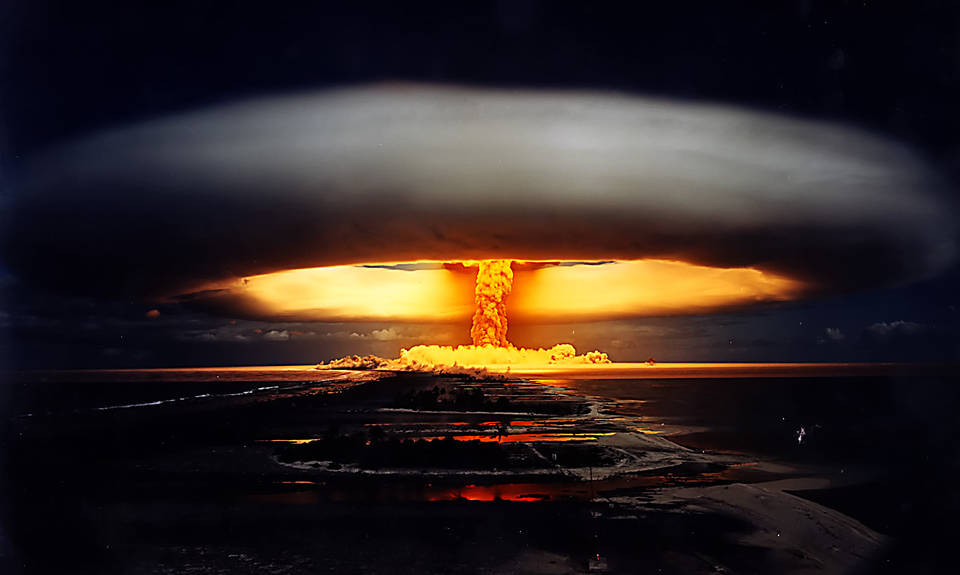All Issues
Global warming may eliminate our species over the next 100 years. The nuclear arsenal may do it in the next 100 minutes. – Elaine Scarry
Mission
The Nuclear Disarmament group, the largest and most long-standing of the Mass Peace Action working groups, works for the total elimination of nuclear weapons within the decade. Through education and legislative advocacy, we work for risk reduction, non-proliferation, disarmament, and abolition. Our main campaigns challenge the proposed investments in nuclear modernization, call for No First Use, organize support for the Treaty on the Prohibition of Nuclear Weapons and call on the United States to “lead the charge” to a world without nuclear weapons (Joe Biden, Jan 11, 2017).
History
Nuclear weapons are the most indiscriminate, destructive, inhumane weapons ever built by man. They are literally weapons of mass murder and terror and today are an unappreciated threat to human life on this planet. If just a tiny fraction of the current world arsenal is launched, an unthinkable level of injury and devastation will occur worldwide. Tens of millions of people will be casualties on the first afternoon and one billion in the weeks following. The ensuing global nuclear-induced winter would conceivably end most of life on earth: even a few thousand nuclear detonations would unleash enough soot and smoke to darken the atmosphere worldwide, cause a planet-wide mini-ice age and a complete collapse of the global food system – virtually all survivors would starve to death. In January 2022 for the third year in a row, the experts at the Bulletin of the Atomic Scientists have set the iconic Doomsday Clock at 100 seconds to midnight with midnight signifying nuclear apocalypse. Humanity has not been this close to catastrophe since the height of the Cold War.
Nuclear Arms Control
The United States is one of nine global nuclear powers. The others are the United Kingdom, France, Russia, China, Pakistan, India, Israel and North Korea. Together they possess an estimated 12,700 nuclear weapons with United States and Russia holding over 90 percent. The United States, the first to have developed and deployed them, is the only nation to have used nuclear weapons during war. As long as these states adhere to maintaining their nuclear arsenals, others are incentivized to develop them.
The international arms control agreements that for decades provided a level of security against nuclear conflict have been steadily eroded this century. In the last four years the United States withdrew from the Joint Comprehensive Plan of Action (aka the “Iran Nuclear Deal”), the Intermediate-Range Nuclear Forces (INF) Treaty, and the Open Skies Treaty. And while President Biden has agreed to extend by another five years the Strategic Arms Reduction Treaty of 2011 (New START) with Russia and has made efforts to rejoin the Iran deal, he has not delivered on his campaign pledges for nuclear disarmament and arms control. Biden has announced the U.S. will not rejoin the Open Skies Treaty of 1992 and is continuing the multi-decade program to “modernize” the nuclear arsenal that has already led to the development and alarming deployment of the so called “low-yield”, more easily used warheads.
The Cost
Nuclear weapons program costs continue to skyrocket: In FY2018, $22.4 Billion of U.S. tax dollars ($ 727.24 million for Massachusetts alone) were spent on nuclear weapons. The nuclear weapons “modernization” program has increased each year and may cost as much as $1.7 Trillion. President Biden has requested $43 billion for nuclear weapons for FY 2022, almost five times the entire budget for the CDC and a 14% increase over 2020. Russia and China are following with upgrades to their systems – all this extravagant waste on weapons of mass destruction while money needed to address the climate emergency, a global vaccine program, pandemic preparedness and response cannot be found.
Be Their Voice
Related legislation
Nuclear disarmament legislation in Congress
The Nuclear Disarmament Initiative in the MA State House
2022 Work Plan
Get Involved
The Nuclear Disarmament working group meets monthly, Sundays at 4PM. For more information contact chair Susan Mirsky at smirsky7@gmail.com.
Videos
Events



 Subscribe to Massachusetts Peace Action videos
Subscribe to Massachusetts Peace Action videos